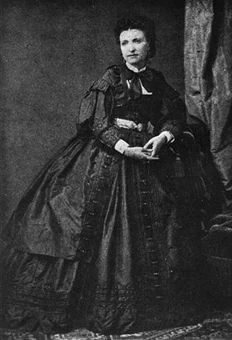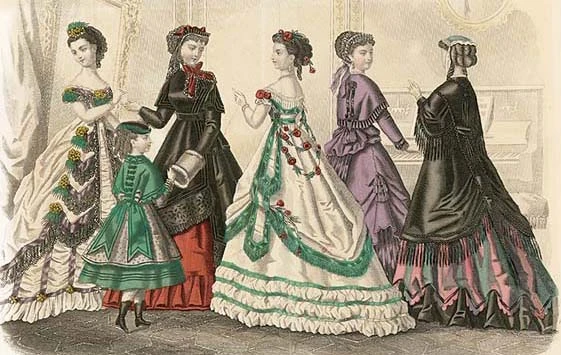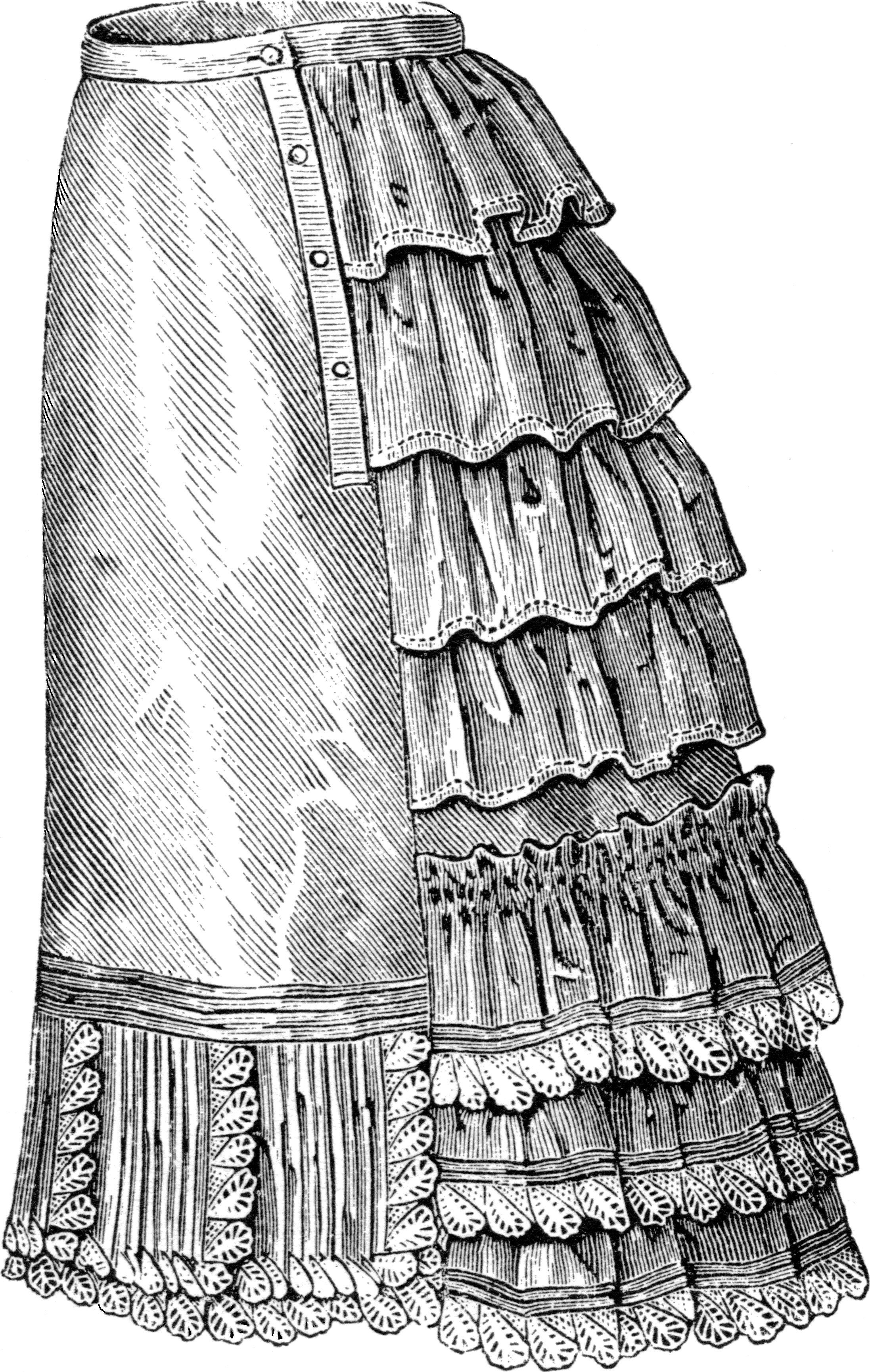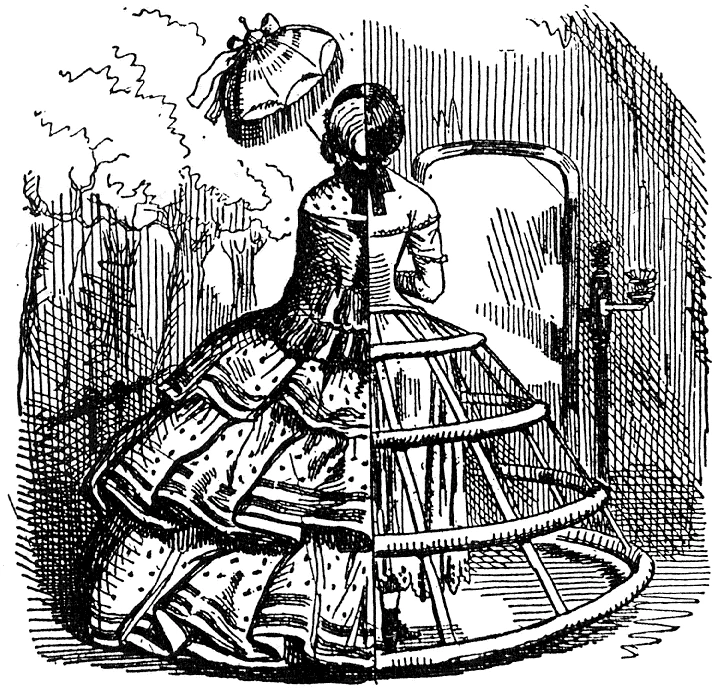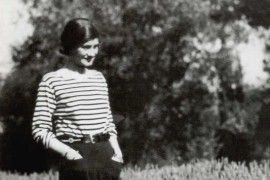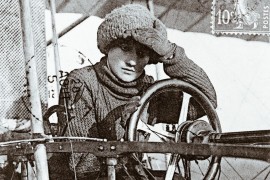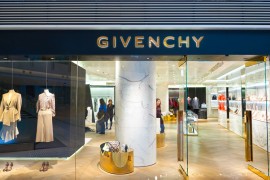From Clermont-Ferrand to Paris: a saleswoman with a sure eye
Born on August 26, 1825 in Clermont-Ferrand, Marie Augustine Vernet arrived in Paris at a young age. She works as a salesgirl in the Gagelin textile house. Her eye for fabrics, poise and diplomacy with customers soon set her apart. It was here that she crossed paths with a promising employee, an Englishman who had arrived a few years earlier: Charles Jean Philippe Worth.
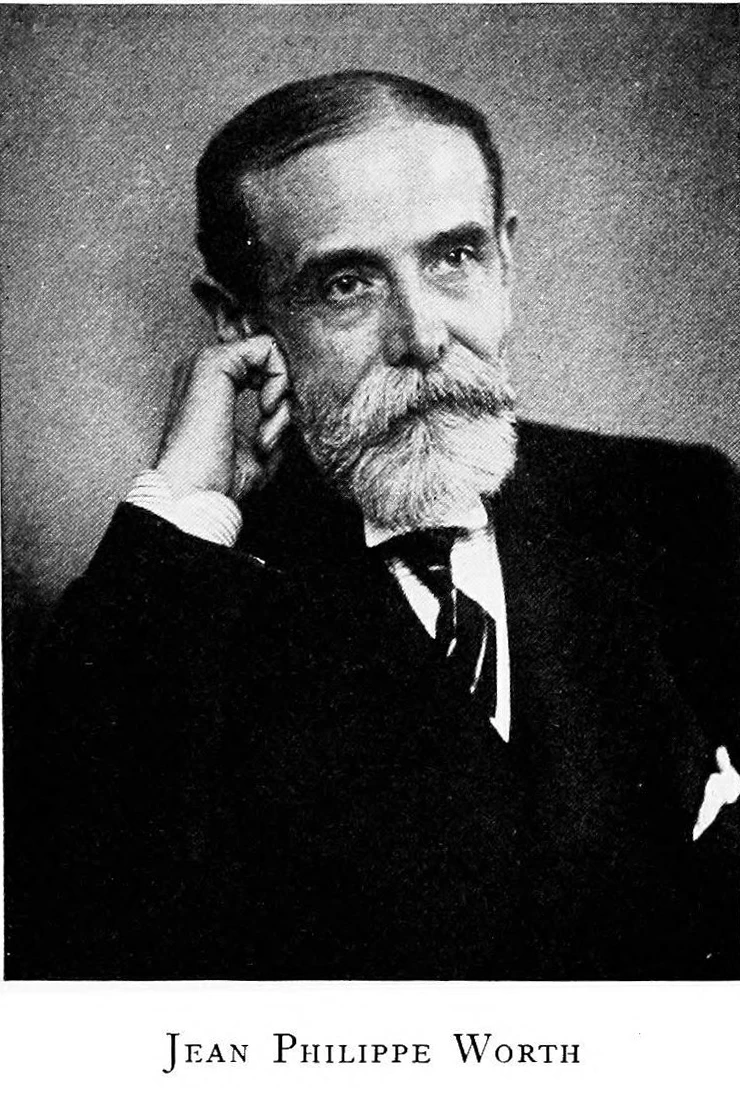
Jean Philippe Worth — Internet Archive, Domaine public, https://commons.wikimedia.org/w/index.php?curid=49809469
A founding encounter: Worth + Vernet, modernity duo
Worth is already designing outfits that go beyond simply selling fabric by the meter. He designs, cuts, composes silhouettes. To convince his wealthy clientele, he asks Marie Vernet to don his pieces, to "walk into" the salon, to offer the dress in motion. The shock is immediate: the customer's gaze is projected, the purchase follows. The dress comes to life: this is the birth of the "on-model" presentation.
Marie Vernet-Worth history's first mannequin (1825 - 1898).
1851-1858: marriage, Maison Worth and the birth of a method
Marie and Charles marry in 1851. In 1858, they opened the Maison Worth on rue de la Paix. Their revolution was not just aesthetic: it was commercial and social. Henceforth, the customer was no longer content with a silk coupon and a pattern to be made at home; she entered a universe, a signed style, a couturier's authority. And at the heart of this scenography, Marie Vernet becomes the first professional "model", the one who wears the dress to reveal its promise.
Showing to sell: a new fashion language
In the salon, everything is set. Marie Vernet advances, turns, pauses, shows the ease of a skirt, the suppleness of a bodice, the hold of a mantelet. She knows how to govern light and distance, take the axis where the fabric blazes, offer to the eye what the sketch doesn't explain. At a time when fashion photography is still in its infancy, "the image" is alive, it's her.
A fashion catalog from 1860 / Source Wikipedia
From the workshop to the world: when the customer becomes the audience
Thanks to prescribing customers - Pauline von Metternich first, then the Impress Eugenie - the Maison Worth established itself among the European courts. The Worth dress becomes a sign of belonging and modernity. Marie Vernet, for her part, is its ambassador, both in the salon and at parties, where she wears the latest fashions to "get the word out" about the house. She invents a form of influence before its time: creating desire through presence.
The mechanics of a session: rhythm, touch, silence
There's nothing improvised about success. Each presentation follows a tempo: an intimate fashion show before its time. Marie's hands know how to smooth a fold, hold back a plank, awaken a passement. She anticipates a customer's question with an answering gesture. She's not selling a garment, she's recounting a look.
A 19th century petticoat / Domaine public, https://commons.wikimedia.org/w/index.php?curid=63121
A model... of a model: a profession is born
Before long, other houses were adopting the method: presenting on woman. The word "mannequin", hitherto reserved for studio busts, slips to the person. The profession structures itself slowly, until the first agencies in the XXᵉ century. The founding act remains that of Marie Vernet: wear to explain, move to convince.
Gradual withdrawal, lasting influence
Around 1865, Marie's health declined and she exposed herself less. But her role remains central: she manages, welcomes, arbitrates. After Worth's death (1895), she maintains the house, then passes away in 1898. The House of Worth continues until the middle of the XXᵉ century, held by their sons and successors. Marie's imprint remains inscribed in fashion grammar: the dress must be seen "in real life".
Why Marie Vernet still counts today
Because she shifted the center of gravity of selling: from the counter to the stage, from the laid cloth to the lived cloth. Because she gave the female body the role of argument - not object, but proof of use and allure. Because the whole modern chain (showrooms, presentations, Fashion Weeks) derives from this evidence born on Rue de la Paix: to see moving is to understand.
Source : wikicommons
FAQ
Who is history's first supermodel?
A saleswoman who became Charles Frederick Worth's collaborator, Marie Vernet is considered the first professional model: she presented dresses "on model" to convince customers.
Why is she called the "first model"?
Because the Maison Worth introduced the presentation worn in the salon, and Marie Vernet was the main performer: she "played" the dress to sell it.
What role did he play in the success of Maison Worth?
Essential: she gave a face, a step and an allure to the creations, creating desire among an elite clientele that would become international.
Has she walked the catwalk
No: the public catwalk didn't yet exist. Presentations take place in salons, in restricted circles, but according to an already very modern "sequence" logic.
Why are we talking about "influencers" before their time?
Because wearing a dress to a party meant getting the word out about the house. Marie Vernet creates notoriety by her mere presence, long before photos, magazines and social networks.

